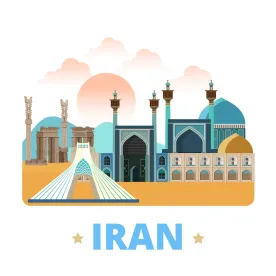On February 21, 2018, the Supreme Court of the United States issued a decision,[1] affirming the United States Court of Appeals for the Seventh Circuit’s 2016 decision[2] that held that a collection of ca. 30,000 ancient Persian artifacts[3] that have been on loan to the University of Chicago’s Oriental Institute since 1937 is immune from attachment and execution to satisfy a judgment against the Islamic Republic of Iran. The decision concluded a decades-long effort by the plaintiffs, a group of American citizens seriously injured in a suicide bombing in Jerusalem in 1997.[4] The plaintiffs sued the Islamic Republic of Iran in U.S. District Court for the District of Columbia for Iran’s role in providing material support to the terrorists, and obtained a $71.5 million default judgment (and an additional $300 million in punitive damages). [5]
The Persepolis Collection and Other Persian Artifacts
The plaintiffs initially sought to execute on the judgment against “four collections of ancient Persian artifacts … the Persepolis Collection, the Chogha Mish Collection, and the Oriental Institute Collection, all in the possession of the University of Chicago; and the Herzfeld Collection, split between the University and Chicago’s Field Museum of Natural History.”[6] However, the court only had jurisdiction to consider attachment and execution upon those artifacts that were (1) owned by Iran, and (2) within the territorial jurisdiction of the court. During the pendency of the case, the Chogha Mish Collection was returned to Iran as a matter of cultural diplomacy, and so was not within the court’s territorial jurisdiction. The Oriental Institute Collection and the Herzfeld Collections (at both the University of Chicago and the Field Museum) are not the property of Iran, and so also were not available for attachment and execution. Only the Persepolis Collection met both requirements, being both property of Iran (on long-term loan to the University of Chicago) and located within the court’s territorial jurisdiction.
The Seventh Circuit issued its decision on July 19, 2016, holding that Section 1610(g) of the Foreign Sovereign Immunities Act (“FSIA”)[7] does not establish an independent exception from foreign sovereign immunity for sovereign property separate from the commercial use requirements in the rest of Section 1610. In so holding, the Seventh Circuit split with the Ninth Circuit’s decision in Bennett v. Islamic Republic of Iran,[8] which had held that Section 1610(g) did provide an independent basis to strip immunity from sovereign property located in the U.S. The Supreme Court took up the case to resolve this split, and to clarify the application of Section 1610(g) to questions of execution immunity for sovereign property.
Foreign Sovereign Immunity
The fate of the Persepolis Collection turned on the fairly arcane question of foreign sovereign immunity. As a general rule, foreign states have immunity from the jurisdiction of U.S. courts (jurisdictional immunity)[9] and their property located in the United States is immune from attachment, arrest, and execution (execution immunity).[10] Until the mid-twentieth century, the United States (and most other countries) observed the doctrine of absolute sovereign immunity, and no foreign state could be subject to the jurisdiction of the courts of another state. Early in the Nineteenth Century, the Court addressed the question of the doctrine of absolute sovereign immunity, which the Court stated derives from the “perfect equality and absolute independence of sovereigns.”[11] Foreign sovereign immunity was regarded as “a matter of grace and comity on the part of the United States,”[12] and was a function of the Executive Branch’s foreign affairs power. Under the absolute sovereign immunity doctrine, when a foreign sovereign was sued in a U.S. court, the foreign state would request a “suggestion of immunity” from the U.S. State Department. If the State Department granted the request, the court would surrender jurisdiction and the case would be dismissed.
In 1952, the U.S. abandoned the absolute sovereign immunity doctrine in favor of the restrictive theory of sovereign immunity, which was articulated in what has come to be called the Tate Letter, written by Jack B. Tate, the State Department’s Acting Legal Adviser.[13] Under the restrictive theory, a foreign sovereign remains immune from suit for its public acts, but is not immune with respect to its commercial activities. However, under the restrictive theory, sovereign property remained immune from execution. [14] Congress codified the restrictive theory in 1976 as the FSIA, adding exceptions for execution on foreign sovereign property.
Exceptions to Foreign Sovereign Immunity
Relevant to the Persepolis Collection, the FSIA does three things – (1) it establishes the basic principal that foreign sovereigns and their property are immune from suit and from execution in U.S. courts (including state courts);[15] (2) it provides specific exceptions to jurisdictional immunity so that, in certain circumstances, foreign sovereigns and their agencies and instrumentalities may be sued; and (3) it provides specific exceptions to execution immunity so that, in certain circumstances, sovereign property located in the U.S. may be subject to attachment, arrest, and execution. The plaintiffs were able to sue Iran and obtain their default judgment under the terrorism exception to the FSIA (providing an exception to jurisdictional immunity), which states, in pertinent part, that “[a] foreign state shall not be immune from the jurisdiction of courts of the United States or of the States in any case not otherwise covered by this chapter in which money damages are sought against a foreign state for personal injury or death that was caused by an act of torture, extrajudicial killing, aircraft sabotage, hostage taking, or the provision of material support or resources for such an act.”[16]
In order for the plaintiffs to be able to execute on the Persepolis Collection, an exception to execution immunity was required. FSIA Section 1609 governs execution on sovereign property, and provides that “the property in the United States of a foreign state shall be immune from attachment arrest and execution except as provided in sections 1610 and 1611.”[17] Section 1610(g) provides, in pertinent part, that “the property of a foreign state against which a judgment is entered under section 1605A, and the property of an agency or instrumentality of such a state, including property that is a separate juridical entity or is an interest held directly or indirectly in a separate juridical entity, is subject to attachment in aid of execution, and execution, upon that judgment as provided in this section”[18] (italics added). While Section 1610 generally requires that sovereign property be used by the foreign state in commercial activity in the U.S.,[19] the plaintiffs argued that “§ 1610(g) makes all Iranian assets available for execution without proof of a nexus to commercial activity – that is, without having to satisfy § 1610(a).”[20]
Justice Sotomayor, writing for the Court, agreed with the Seventh Circuit’s analysis of Section 1610(g), noting that that section:
…conspicuously lacks the textual markers, ‘shall not be immune’ or ‘notwithstanding any other provision of law,’ that would have shown that it serves as an independent avenue for abrogation of immunity. In fact, its use of the phrase ‘as provided in this section’ signal the opposite: A judgment holder seeking to take advantage of § 1610(g)(1) must identify a basis under one of § 1610’s express immunity-abrogating provisions to attach and execute against a relevant property.[21]
The Court explained that, rather than providing an independent basis for abrogating immunity, Section 1610(g) instead allows holders of judgments against foreign states under the terrorism exception (Section 1605A) to execute their judgments against property of “government instrumentalities established as juridical entities distinct and independent from their sovereign” without having to satisfy the Bancec factors, which courts developed in response to the Court’s 1983 Bancec decision.[22]
Because the artifacts comprising the Persepolis Collection are on loan to the University of Chicago for “research, translation, and cataloging,”[23] not for commercial activity,[24] the artifacts do not satisfy the requirements of Section 1610(a) and so remain immune from attachment, arrest, and execution. In clarifying the application of FSIA Section 1610(g), the Court has provided important guidance to a broad spectrum of cultural and educational institutions that engage in exchanges with foreign states, and their agencies and instrumentalities, including museums and libraries.
[1] Rubin v. Islamic Republic of Iran, No. 16-534, 2018 U.S. LEXIS 1376 (S.Ct. Feb. 21, 2018).
[2] Rubin v. Islamic Republic of Iran, 830 F.3d 470 (7th Cir. 2016).
[3] The Persepolis Collection consists of ca. 30,000 clay tablets and fragments “containing some of the oldest writings in the world.” Id. at 474. For more information about the Persepolis Collection, see https://oi.uchicago.edu/collections/highlights/highlights-collection-iran
[4] See “7 Killed in Bomb Blasts in Jerusalem,” CNN, Sept. 4, 1997, available at http://www.cnn.com/WORLD/9709/04/israel.blast.930/
[5] Campuzano v. Islamic Republic of Iran, 281 F.Supp.2d 258 (D.D.C. 2003).
[6] Rubin v. Islamic Republic of Iran, 830 F.3d at 473.
[7] 28 U.S.C. §§ 1602-11.
[8] Bennett v. Islamic Republic of Iran, 825 F.3d 949, 960 (9th Cir. 2016).
[9] 28 U.S.C. § 1604.
[10] 28 U.S.C. § 1609.
[11] The Schooner Exch. V. McFaddon, 11 U.S. 116 (1812).
[12] Rubin v. Islamic Republic of Iran, 830 F.3d at 476 (quoting Verlinden B.V. v. Cent. Bank of Nigeria, 461, U.S. 480, 486 (1983)).
[13] Letter from Jack B. Tate, Acting Legal Adviser, U.S. Dep’t of State, to Philip B. Perlman, Acting U.S. Attorney General (May 19, 1952), reprinted in 26 Dep’t St. Bull. 984-85 (1952) and Alfred Dunhill of London, Inc. v. Republic of Cuba, 425 U.S. 682, 711-15 (1976); see also Claire E. Stephens, “Storming the Persian Gates: The Seventh Circuit Denies Attachment to Iranian Antiquities,” 12 Seventh Circuit Rev. 164 (Fall, 2016).
[14] Rubin v. Islamic Republic of Iran, 830 F.3d at 477.
[15] Section 1604 of the FSIA states the basic rule: “Subject to existing international agreements to which the United States is a party at the time of enactment of this Act a foreign state shall be immune from the jurisdiction of the courts of the United States and of the States except as provided in section 1605 to 1607 of this chapter.” 28 U.S.C, § 1604.
[16] The terrorism exception to the FSIA is codified at 28 U.S.C. § 1605A.
[17] 28 U.S.C. § 1609.
[18] 28 U.S.C. § 1610(g).
[19] See 28 U.S.C. 1610(a), stating, in part, that “[t]he property in the United States of a foreign state, … used for a commercial activity in the United States, shall not be immune from attachment in aid of execution, or from execution, upon a judgment entered by a court of the United States or of a State.”
[20] Rubin v. Islamic Republic of Iran, 830 F.3d at 481.
[21] Rubin v. Islamic Republic of Iran, No. 16-534, 2018 U.S. LEXIS 1376 at *16-17.
22] First Nat. City Bank v. Banco Para el Comercio Exterior de Cuba, 462 U.S. 611 (1983).
[23] Rubin v. Islamic Republic of Iran, No. 16-534, 2018 U.S. LEXIS 1376 at *9.
[24] The FSIA defines “commercial activity” as “either a regular course of commercial conduct or a particular commercial transaction or act. The commercial character of an activity shall be determined by reference to the nature of the course of conduct or particular transaction or act, rather than by reference to its purpose. 28 U.S.C. § 1603(d). The owner of the property must be the party engaged in the relevant commercial activity and there must be some nexus between the commercial activity and the property at issue. See, e.g., Siderman de Blake v. Republic of Argentina, 965 F.2d 699, 709 (9th Cir. 1992); Altmann v. Republic of Austria, 317 F.3d 954, 969 (9th Cir. 2002).



 />i
/>i

